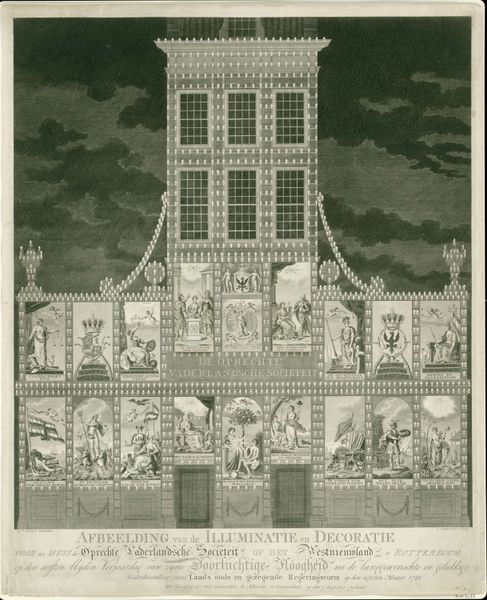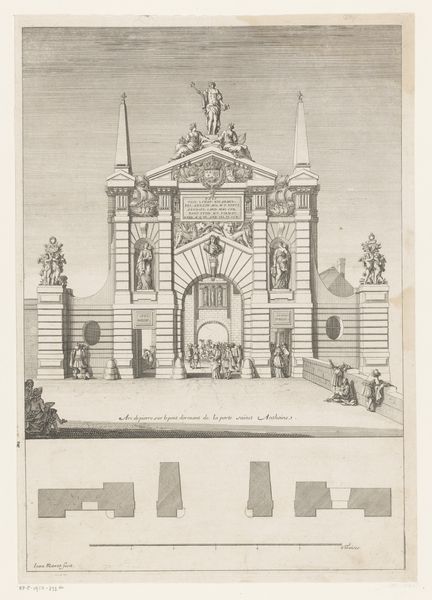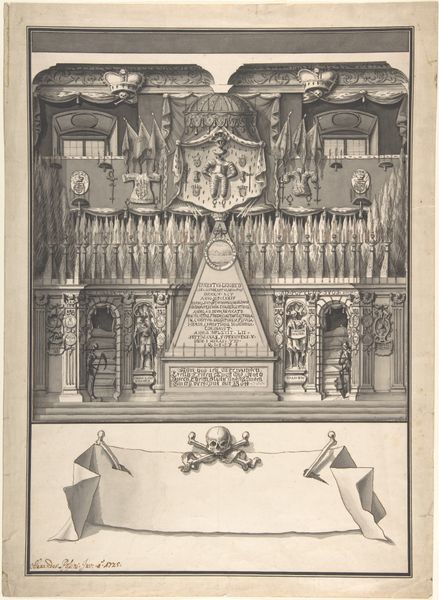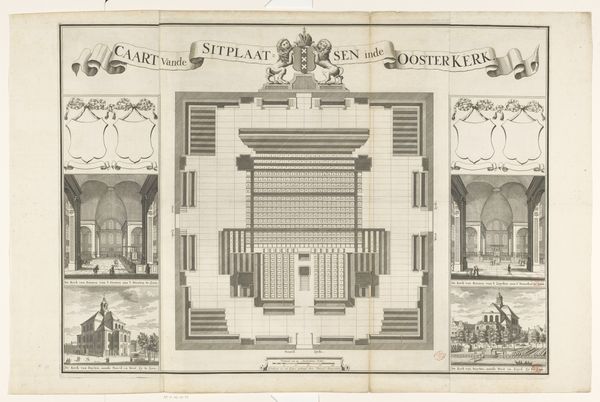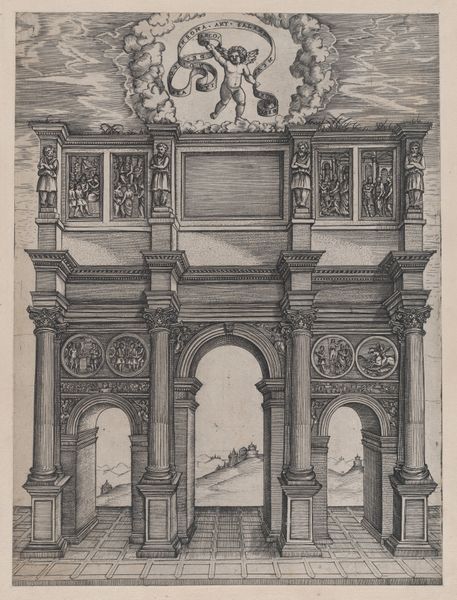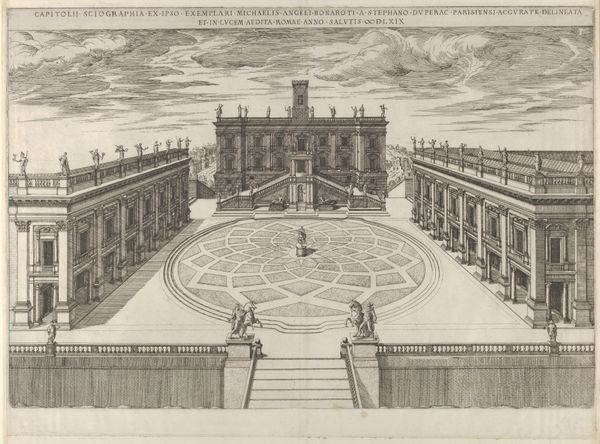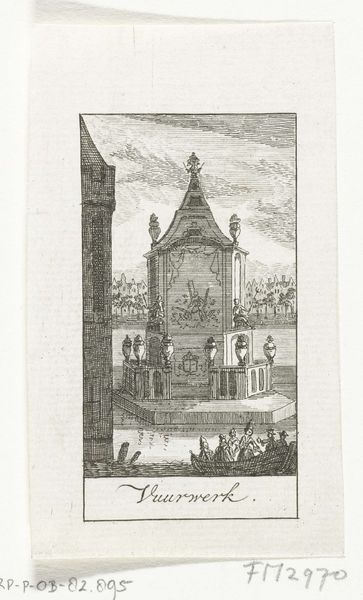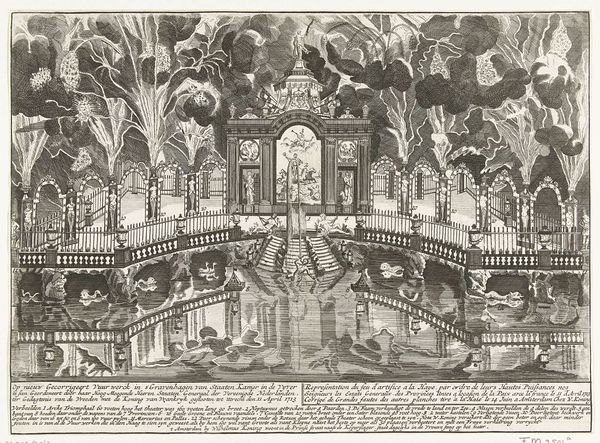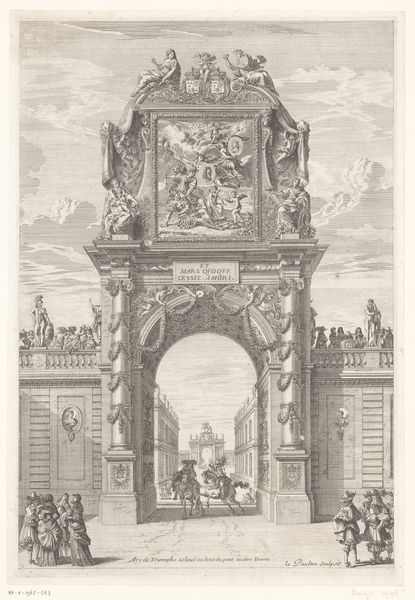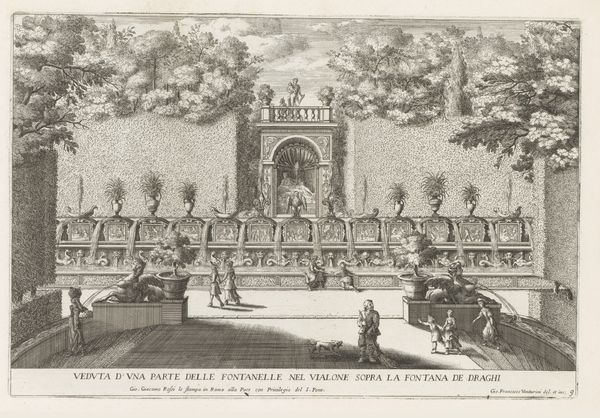
Illuminatie van het pand van de Oprechte Vaderlandsche Sociëteit op het Westnieuwland te Rotterdam, 1788 1788
0:00
0:00
Dimensions: height 315 mm, width 243 mm
Copyright: Rijks Museum: Open Domain
Curator: Let's turn our attention to this engraving by Franciscus Sansom, created in 1788. It’s titled "Illumination of the Building of the Upright Patriotic Society on the West Nieuwland in Rotterdam, 1788." Editor: Wow, quite a mouthful! And quite a sight. It's almost overwhelming with detail, but I'm immediately struck by the contrast between the dark, stormy sky and the brightly illuminated building. It's a very striking visual. Curator: Indeed. This print commemorates the illumination and decoration of the building of the Oprechte Vaderlandsche Sociëteit, which translates to the Upright Patriotic Society. These societies emerged during a turbulent period in Dutch history. They represented a powerful, popular movement that championed a return to the old and praised governing structures. Editor: So, it’s propaganda, effectively? In incredibly ornate wrapping. I'm looking at how the artist meticulously rendered every little light, garland, and emblem—clearly celebrating the act of ornamentation itself. What materials were employed to execute all this temporary ornamentation in real life? Were these paper cutouts, oil lamps? The level of intense labor required to physically adorn this building must have been something else. Curator: It’s a potent visual statement about social and political leanings. Each panel carries symbolism, communicating this patriotic fervor that swept across the nation, favoring the restoration of the Stadholderate amidst growing calls for a more democratic government. Engravings like these played a crucial role in disseminating such political messages to the broader public, becoming important historical records of socio-political happenings. Editor: I keep circling back to the building itself, though. It's as if the architecture becomes a scaffold for broadcasting ideological statements, a crafted stage for these powerful groups. Consider the materials employed not only to light and decorate the building but the engraving production and distribution – those were equally powerful tools of persuasion at their disposal. Curator: It gives you a clear image of the priorities of this political faction during the era. Editor: Yes, a compelling and cautionary reminder to consider the power of the materials of culture-making.
Comments
No comments
Be the first to comment and join the conversation on the ultimate creative platform.
